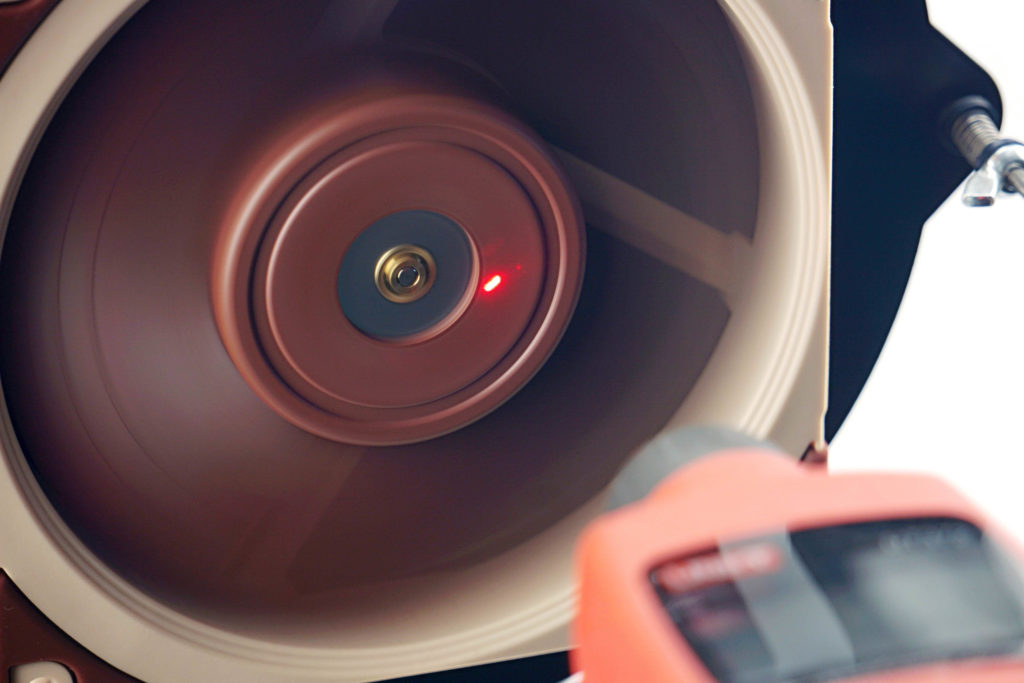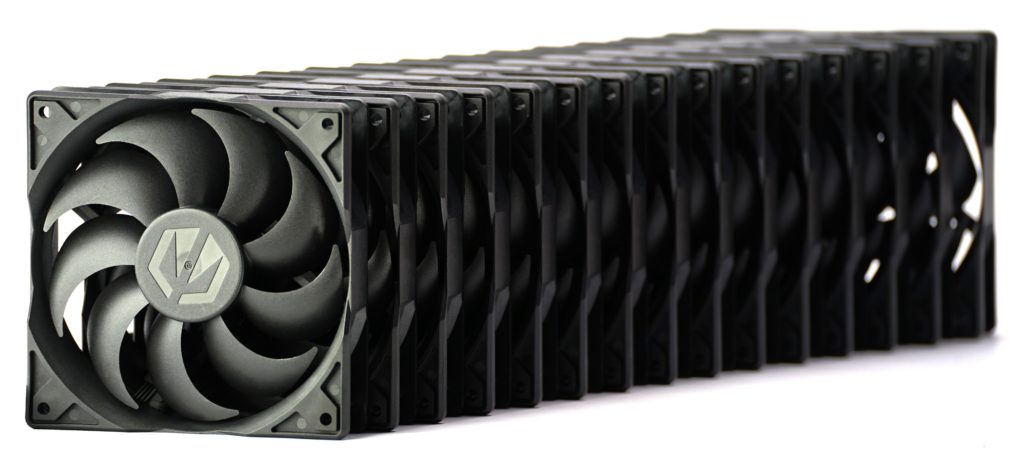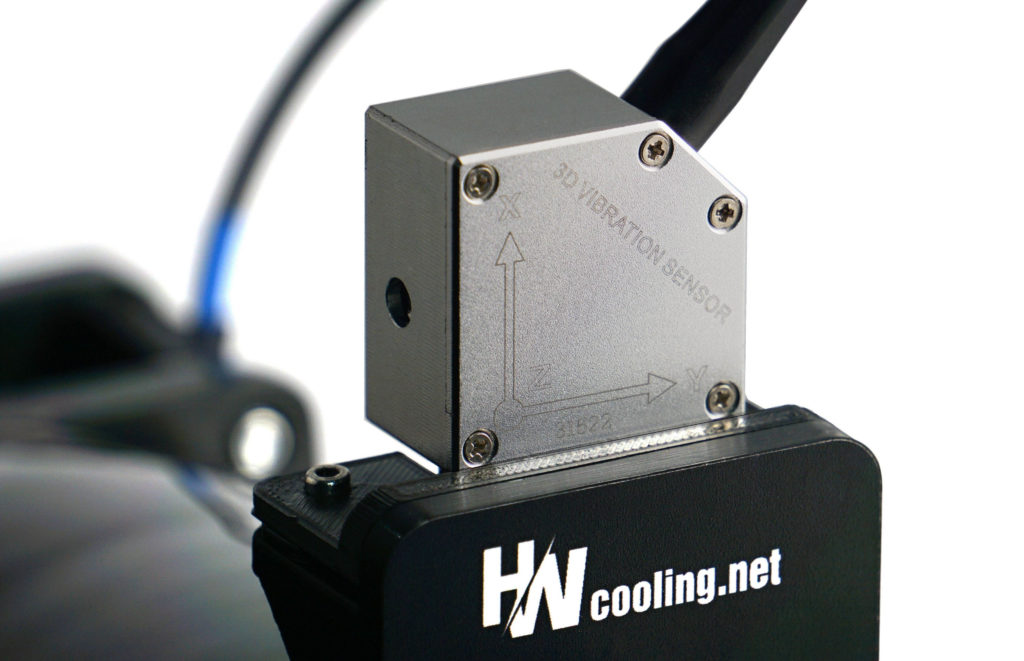Each piece has different vibrations
Same model, different pieces. Differences in vibrations can be dramatic. Especially if they are cheap fans with high manufacturing tolerances. While most Endorfy Stratus 120 PWM fans have some vibration, you can also come across “golden” samples that don’t vibrate at all. This is admittedly a very rare but existing situation. The variance of vibration is much greater than you might think.
Each piece has different vibrations
Like all products, fans have some manufacturing tolerances. These determine to what extent some of the engineering details can vary across samples. Well, this should be the case, although it is possible that in practice there are often no funds left for a proper output check.
Higher manufacturing tolerances can naturally be expected for fans on the more inexpensive side, or we expect that the results of individual samples will vary more from piece to piece than for 2-3 times more expensive models. Of course, this may not always be the case, but in our experience, on average, the proportionality holds true that the differences in vibration increase with lower price if two different pieces of the same fan model are compared at the same speed. This is also why we work with at least two samples in our measurements, and if the difference in measured values is too high, we add a third sample. That’s usually the case with cheap fans, which include the Endrofy Stratus 120 PWM, codenamed EY4A007. At a price of around 6 EUR, we don’t want to criticize them for anything, and although they will get the brunt of it now, because they are being pointed out, later you will see that similar and even worse results will apply to other models as well.
In the following sections of the article, we will analyze 15 pieces of the aforementioned fan (Stratus 120 PWM), which are made up of a random selection from a store. Based on our vibration measurements, the way we are doing them, a set of results will emerge that can be arranged from lowest to highest. This will create a kind of variance given by, among other things, the median. That is to say, the middle value of the measurements. But it will also show how much the least vibrating sample may differ from the one that vibrates the most.
And why measure vibrations and not something else? Because it is this parameter that best reflects the differences in machine production. Measuring anything else at the same speed would give you significantly smaller, always negligible differences. But the variance of vibration, on the other hand, is wide, and all the more so when the measurements are very sensitive, with high resolution.
Methodologically, we reserved six modes for testing, defined by equal speeds, 600, 800, 1000, 1200, 1400 and 1600 rpm. We normally test fans in modes normalized by equal noise levels, but for these purposes we consider speed to be a more appropriate variable. This is for the reason that the measurements are not affected by small nuances in the varying noise levels. Its values do not vary much in our case because the fan is isolated from the rest of the tunnel by a soft “pad”, which makes the secondary noise (amplified by the rest of the structure of builds in which the fans operate) practically non-existent, but even so, as far as vibration analysis is concerned, the more accurate method is to test at the same speed. These are set using the UNI-T UT372 laser tachometer.
Fan speeds always naturally fluctuate a bit over time (on the order of units of rpm), even with “fixed” power supply. On average, after settling, we need to stay at a given speed within one decimal place (so for example 1000.0 rpm) and only then do we start to record vibration measurements. Their values are also averaged and the average values are recorded in the graphs.

Vibration is measured with the Landtek VM-6380 tri-axial vibrometer in the way we do in fan tests as standard. From the partial data for each axis (Chapter 3–5), a 3D vector (Chapter 2) is then computed, which refers to the total vibration.
Individual Endorfy Stratus 120 PWM fan pieces labeled as samples 1–15, with the relatively “worst” piece being red and the “best” being gold. However, you will only come across the latter within the chart pop-up after the cursor hits the “sample 3” box, where the corresponding bar is not displayed as it is numerically registered with a value of 0.00 (i.e. no measurable vibration on the frame). A verbal interpretation of the results can be found traditionally in the final chapter of the article.
- Contents
- Each piece has different vibrations
- Results: Vibration, in total (3D vector length)
- Results: Vibration, X-axis
- Results: Vibration, Y-axis
- Results: Vibration, Z-axis
- Conclusion











The tolerances in cheap GPU fans are even more liberal. This month I returned 2 GPUs. Asus Dual had one utterly defective fan motor, easily +10dB more than the other fan. MSI Gaming X had one of the fans slightly louder. However, slightly louder at the ridiculous minimum of 1000 RPM means LOUD!
You have opened a very good topic. The disproportion of users who think about different coil whines and those who think about various aerodynamic noises is at least remarkable. Especially considering that not only on the basis of these public tests I know that the difference in coil noise between pieces of graphics cards of the same model is usually negligible, or below the level of what a person can recognize. Of course, that’s in cases where equal models means equal VRM design with equal components. If the VRM design is different and based on different components, then yes, there can be a significant difference in noise level, but this is a very rare case.
Much more often, as you write, is that the fans behave differently at the same load. This is probably due to several reasons. The difference in efficiency of the heat transfer from the chip to the cooler probably has some influence on this, which can be caused by even such a small thing as the different application of thermal paste. But one of the main reasons, I think, will be the different quality of the PWM signal. It can be interpreted differently by each cooler and sometimes quite incorrectly. This is evidenced by cases where some graphics cards increase the fan speed even though there is no reason to do so, because the higher speeds are achieved by jumps even with low temperature. This is probably due to a misreading of the PWM signal. And it can probably also be set in a “stable” way, where one sample of the same graphics card model always has slightly higher speeds than another one.
This is one of the topics that we hope to be able to discuss properly. I even have already noted how the methodology should look like to be satisfied with the result. And the time commitment is really extreme. Space for that is quite hard to find. If someone beats us to it and handles these tests with precision and responsibility, I won’t be angry at all. 🙂
Deshrouding seems to be the most reliable way to silence a card (aside from coil whine). Few reviews actually analyze the cards at low noise levels.
Get a card with easily removable fan/shroud and a flat heatsink (preferably one using heatpipes and fin stacks instead of extruded aluminium), then mount standard fans on it using case mounts/zipties/heat resistant double-sided tape. Plug the fans to a motherboard fan header and use Fan Control to control them. Fans of different sizes and thicknesses can be chosen to fit the particular card and case.
Exactly, I think that deshrouding and 2 good 120mm fans are the only way to achieve GPU silence. 4-pin to 4-pin VGA adapter and Y splitter let the fans be completely integrated with the GPU but the minimum at 30% fan’s max RPM is still a limitation for Nvidia, so something like Noctua A12x25 LS with 1200 RPM max would be perfect.
The most difficult thing is creating at least something partially working as a shroud for the new fans, otherwise, the air flow and thermals will be quite bad.